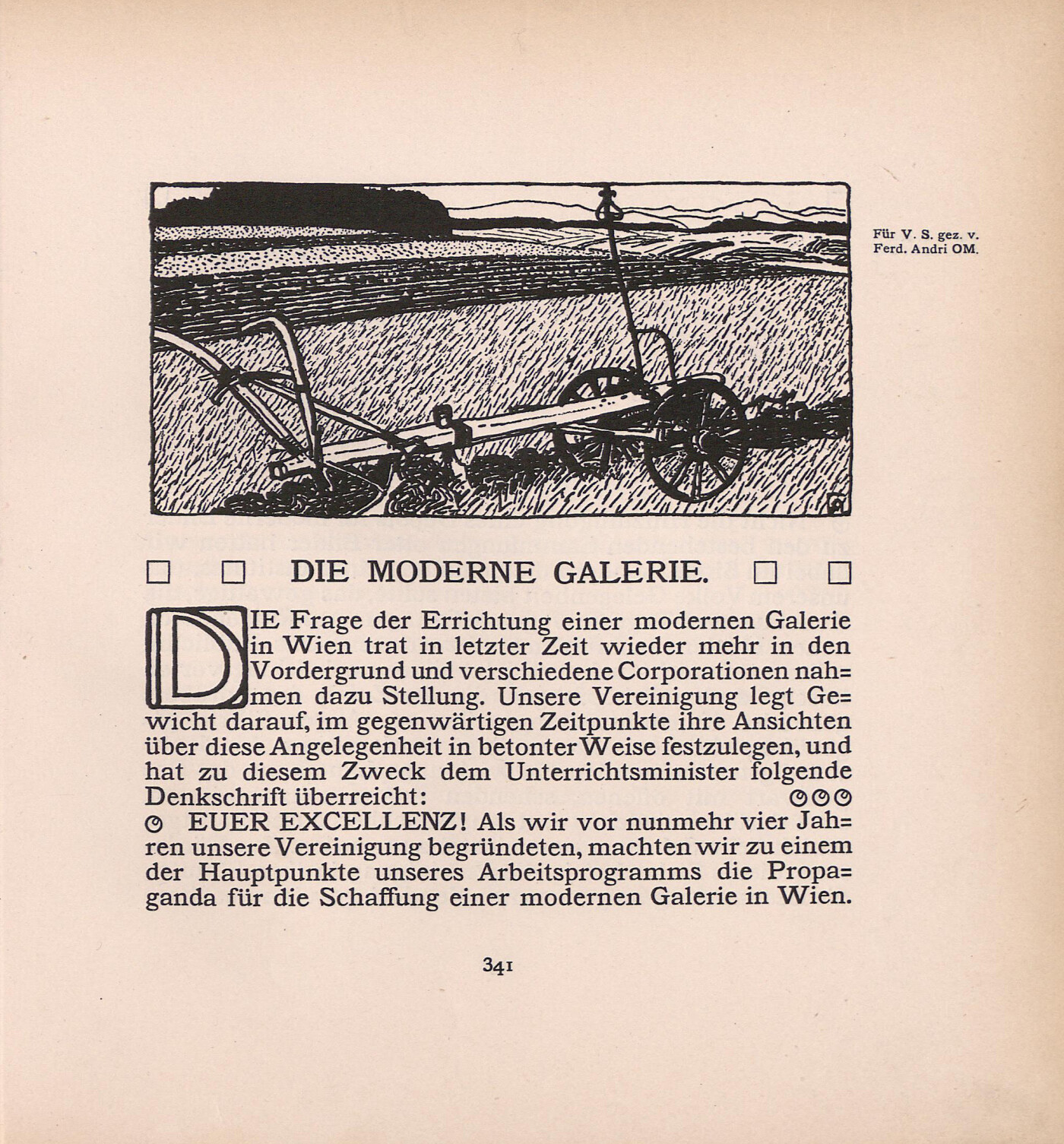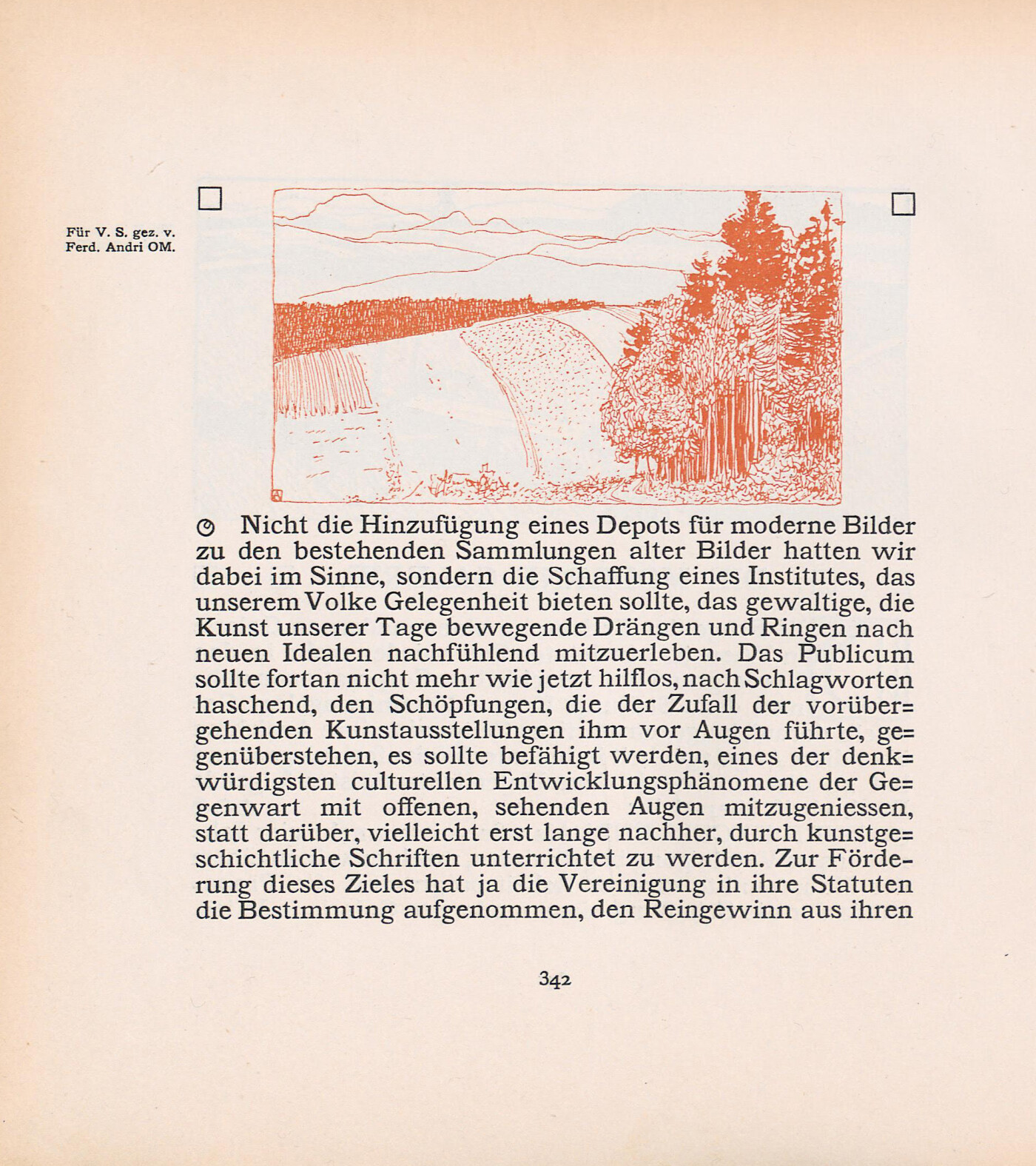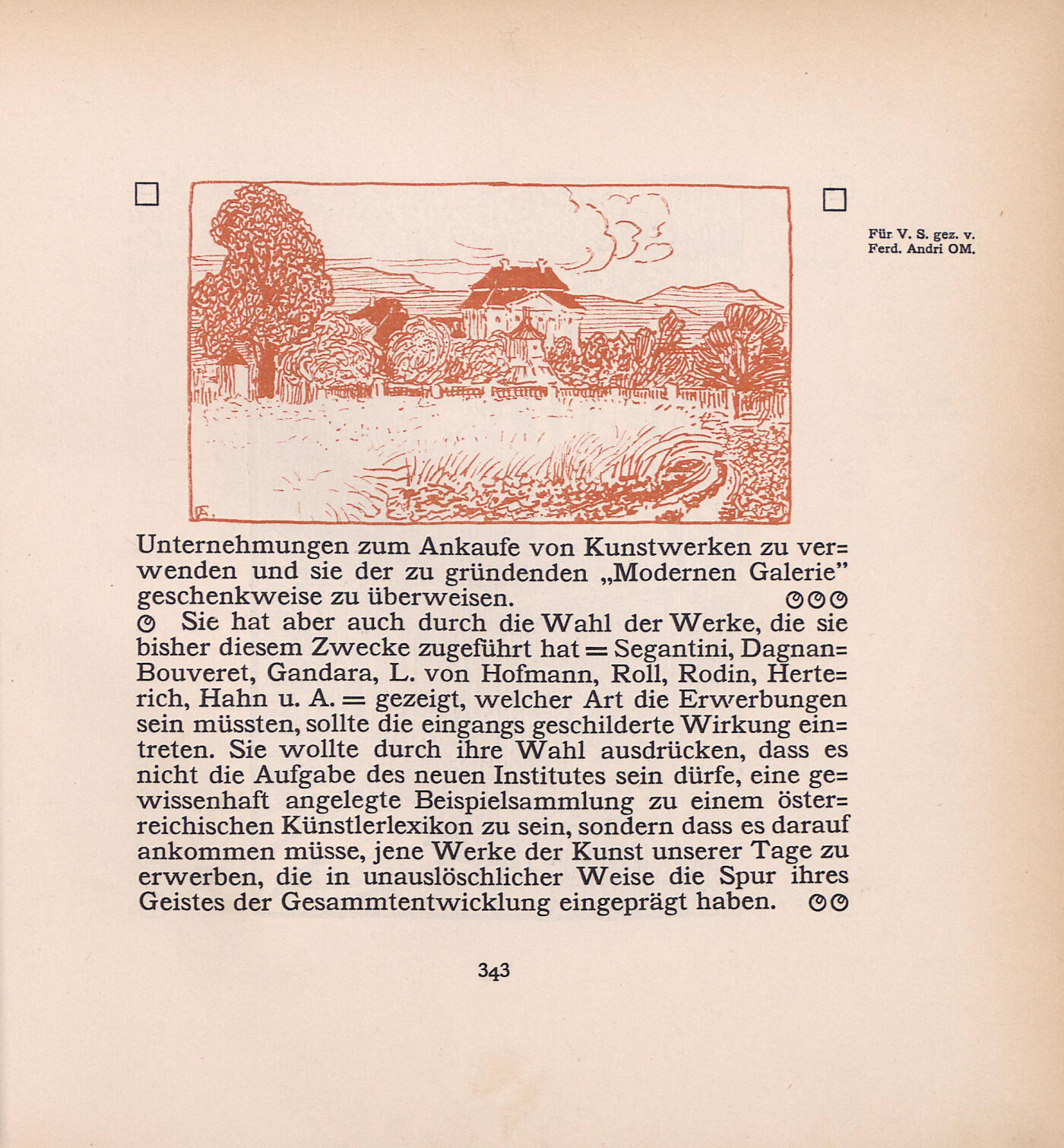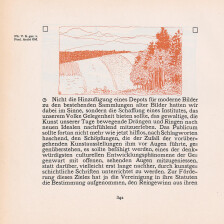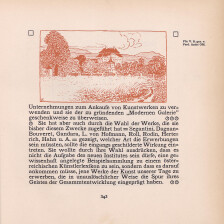Vienna’s Modern Gallery
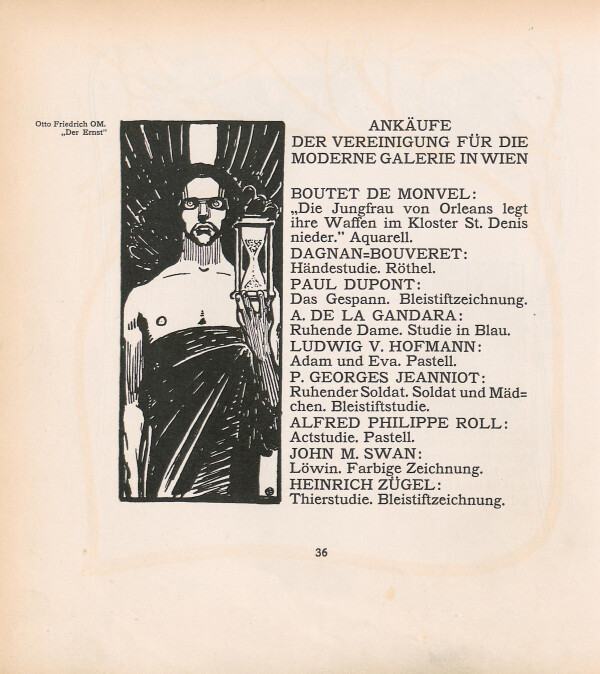
Acquisitions by Association for the Moderne Galerie, in: Vereinigung bildender KünstlerInnen Wiener Secession (Hg.): Ver Sacrum. Mitteilungen der Vereinigung bildender Künstler Österreichs, 3. Jg., Heft 3 (1900).
© Heidelberg University Library
The Modern Gallery opened in Vienna in May 1903. That this state-run cultural institution was finally realized was partly owing to the initiative of the Vienna Secession, which had called for the establishment of a public gallery for contemporary art ever since its foundation.
The Vienna Secession had advocated and pushed for the establishment of a contemporary gallery ever since its foundation. Its statutes already specified that it intended to make purchases for a “future modern gallery” that were to be financed with the net profits from its exhibitions. As around 1900 the question of founding a modern gallery was more and more vehemently discussed at a political level and in the media, the association addressed the Minister of Culture and Education with a pertinent memorandum published in its periodical Ver Sacrum in 1901. In it, the Secessionists appealed to decision-makers for the promotion of modern art and at the same time underscored the need to create an independent, contemporary cultural institution:
“Our intention was not to add a depot for modern paintings to the existing collections of old paintings, but to create an institution that would offer our people the opportunity to experience the powerful urge and struggle for new ideals that move the art of our time.”
In 1902 an agreement was finally reached at a political level, and the decision was made to found and finance a new gallery for contemporary art.
Memorandum to the Minister of Culture and Education, published in Ver Sacrum
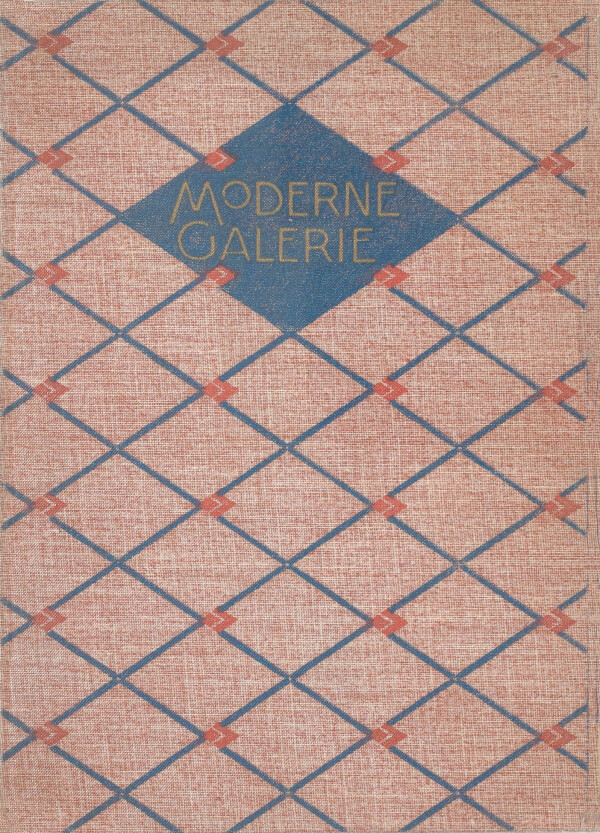
k. k. Ministerium für Cultus und Unterricht (Hg.): Katalog der Modernen Galerie in Wien, Ausst.-Kat., Modern gallery (Vienna), 07.05.1903, Vienna 1903.
© Klimt Foundation, Vienna
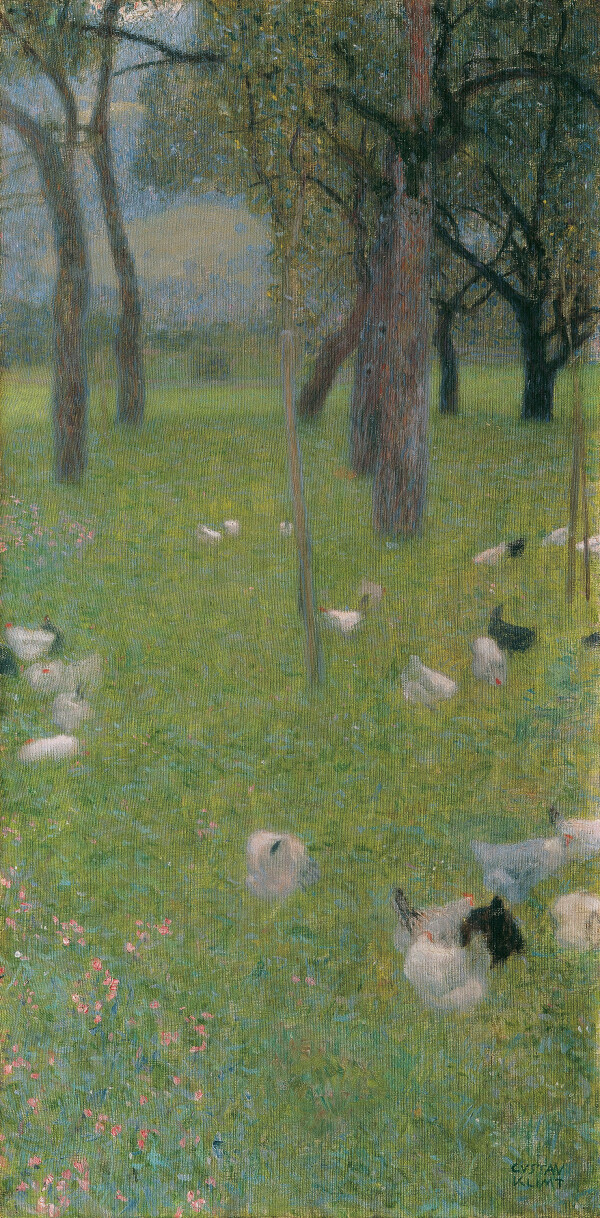
Gustav Klimt: After the Rain (Garden with Chickens in St. Agatha), 1898, Österreichische Galerie Belvedere
© Belvedere, Vienna
Opening of the Modern Gallery (1903)
The Modern Gallery opened in May 1903 at the Lower Belvedere in Vienna’s 3rd District. The venue had previously accommodated the Ambras art collection, which was then relocated to the new Court Museum (now Kunsthistorisches Museum, Vienna). The Belvedere location was only intended as a temporary solution, until the Modern Gallery would be able to move into its own exhibition space envisaged for the newly built municipal museum. The collection itself initially comprised around 200 works by renowned artists from Austria and abroad, such as Ferdinand Waldmüller, Rudolf Alt, Hans Makart, Max Klinger, and Giovanni Segantini. Its holdings had been compiled over several years by the Ministry of Culture and Education and the Vienna Secession and supplemented by a number of donations. Numerous exhibition reviews appeared on the occasion of the opening, praising the new cultural institution and its goals, but also directing criticism at the Secessionists every now and then. On 1 May 1903, for example, Das Vaterland wrote:
“Yet the Modern Gallery should not serve fashion trends, but the best of the present time should find a place in it, and this is certainly not only to be found in the Secessionists’ camp. [...] If their works are as excellent and as exemplary as they always claim, then it can only be to their advantage if they are placed alongside pictures painted in the spirit of traditional art.”
At this time, the Modern Gallery already owned three paintings by Gustav Klimt. Portrait of Josef Lewinsky as Carlos in Clavigo (1895, Belvedere, Vienna), After the Rain (Garden with Chickens in St. Agatha) (1898, Belvedere, Vienna), and On the Attersee (1900, Leopold Museum, Vienna) had been acquired between 1900 and 1902. In 1908, the Ministry of Culture and Education also purchased the painting The Kiss (Lovers) (1908/09, Belvedere, Vienna) at the “Kunstschau Wien.”
From the Modern Gallery to the Österreichische Galerie Belvedere
In 1911, the Modern Gallery was renamed Imperial-Royal Austrian State Gallery, while the original collection mandate remained valid. Over the next few years, new contemporary works of art continued to be purchased or donated or lent to the gallery with the help of important art patrons like Nicolaus Dumba, Victor Zuckerkandl, and Ferdinand Bloch-Bauer – all of them patrons of Gustav Klimt.
A few years after the downfall of the monarchy, the gallery was reorganized and renamed Österreichische Galerie. In 1938, however, the institution for contemporary art, which had existed since 1903, was closed. What is more, the museum’s entire holdings had to be evacuated during World War II, including paintings by Klimt that had previously been confiscated or sold. Some of them were destroyed by fire at Immendorf Castle shortly before the end of the war.
The museum did not officially reopen before 1953. Since 2000, this cultural institution has been run under the name of Österreichische Galerie Belvedere and today owns the world’s largest collection of paintings by Gustav Klimt. In 2006, the museum restituted five of the artist’s works to their legitimate heirs.
Literature and sources
- Felix Czeike (Hg.): Historisches Lexikon Wien, Band 4, Vienna 1995, S. 282.
- Felix Czeike (Hg.): Historisches Lexikon Wien, Band 2, Vienna 1993, S. 450-451.
- Lexikon der österreichischen Provenienzforschung. www.lexikon-provenienzforschung.org/österreichische-galerie (04/27/2020).
- k. k. Ministerium für Cultus und Unterricht (Hg.): Katalog der Modernen Galerie in Wien, Ausst.-Kat., Modern gallery (Vienna), 07.05.1903, Vienna 1903.
- Vereinigung bildender KünstlerInnen Wiener Secession (Hg.): Ver Sacrum. Mitteilungen der Vereinigung bildender Künstler Österreichs, 4. Jg., Heft 20 (1901).
- Ludwig Hevesi: Die moderne Galerie in Wien, in: Kunstchronik. Wochenschrift für Kunst und Kunstgewerbe, N.F., 14. Jg., Heft 29 (1902/03), Spalte 457-462.
- Neues Wiener Journal, 05.05.1903, S. 4-5.
- Illustrirtes Wiener Extrablatt, 05.05.1903.
- Illustrirtes Wiener Extrablatt, 11.01.1902, S. 2.
- Das Vaterland. Zeitung für die österreichische Monarchie, 01.05.1903, S. 1-2.
- Wiener Zeitung, 06.05.1903, S. 5-6.
- Neues Wiener Tagblatt, 07.08.1908, S. 11.
- Neues Wiener Journal, 10.01.1902, S. 2.
- Neue Freie Presse (Morgenausgabe), 10.04.1903, S. 5-6.


